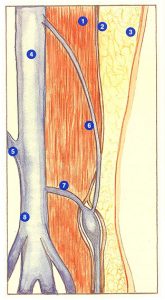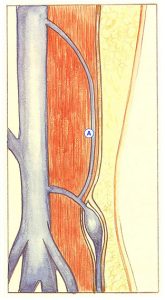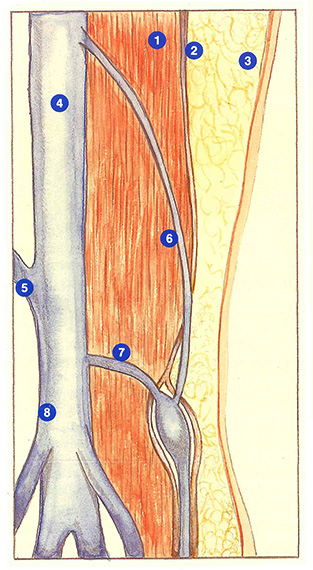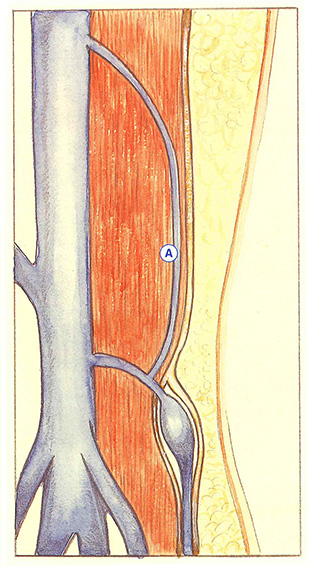Above the popliteal fossa
At this level, the perforating veins usually ensure communication with the profunda femoris network. Exploration of the short saphenous vein, even using a simple pocket Doppler frequently detects reflux above the saphenopopliteal junction, extending onto the posterior surface of the thigh.
The ultrasonographer will then be faced with two types of situation:
- just before it starts to curve, the saphenopopliteal junction gives rise to an overlying trunk (Figure 94). This vessel, initially suprafascial, gradually leaves the superficial plane to join the intramuscular network of deep femoral veins in the upper third of the thigh;
- more rarely, the short saphenous vein gives rise to a trunk arising after its curvature towards the popliteal vein. This trunk remains subfascial throughout its course (Figure 93 and Figure 95). Rather than a profunda femoris perforating vein, this vessel corresponds to a real continuation of the short saphenous vein, which therefore presents a double termination in the deep network: popliteal and femoral.
The two situations described above raise a therapeutic problem. Due to the associated proximal reflux, recurrence can occur after stripping with saphenopopliteal junction ligation. This problem could be resolved by sclerosis using an ultrasound-guided catheter or venous endoscopy.


Further reading
Dortu J., Dortu JA. Les veines perforantes du membre inférieur : physiologie et physiopathologie. Phlébologie, 1994; 47: 167-75.
Gillot C. Les veines perforantes inférieures de la jambe, de la cheville et du pied. Phlébologie, 1994; 47: 76-104.
Thomson H. The surgical anatomy of the superficial and perforating veins of the lower limb. Annals of the Royal College of Surgeons, 1979; 61: 197-205.

